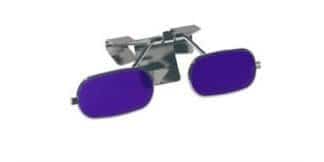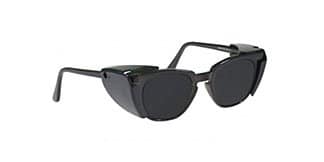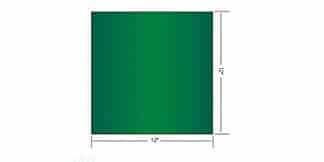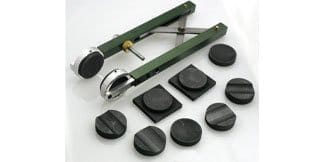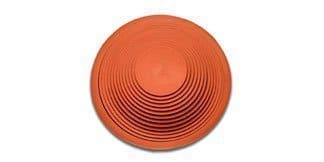We are often asked ‘What Does EN166 Mean?’ so thought we would put this article together to help you understand.
Safety Glasses differ from standard eyewear, as they are developed to provide significantly more protection for your eyes.
For this reason, ALL SAFETY GLASSES are EN166 certified – European certification for eye protection.
All glasses marked as EN166 certified are extremely durable – they pass a series of tests in order to meet this superior certification level. This guarantees your protection from hazards that may contribute to damaging your eyes.
Getting a pair of glasses EN166 approved is the best way to know that your eyes are protected while you are at work or play.
Safety Protection Glasses carry a range of protective eyewear to cover all industries. But how do you know whether the glasses you are purchasing will actually protect your eyes from dust and debris?
In this article we will aim to answer that question by explaining the EN166 Standard, which you should look for when purchasing protective glasses.
Safety glasses differ from standard eyewear as they are developed to provide significantly more protection to your eyes. For this reason, all safety glasses should carry the EN166F Standard. EN166F is the European certification for eye protection.
What is the EN166 Standard?
Its full name is EN166 Personal Eye Protection European Standard, though that is rather long to fit on a pair of glasses! EN166 provides manufacturers with a minimum standard to adhere to for all personal protective equipment within Europe and thereby provide the customer with a guarantee that their PPE will provide adequate safety measures when used.
EN166F is the main technical safety standard for all types of hazards when it comes to eye protection. This standard however, does not cover x-rays, lasers, nuclear radiation or infrared light.
If a pair of glasses is marked as EN166 certified, it is deemed to protect you from hazards that may contribute to damage to your eyes. In order to meet this high certification level, the specific piece of eyewear must pass a series of tests which may include field of vision tests, stability to heat tests, resistance to UV light, optical transmission and diffusion tests, resistance to aging, resistance to corrosion, a wide range of robustness tests and resistance to ignition.
As you can see from the list above, the safety glasses are required to pass a significant number of tests before they can be registered as carrying the EN 166 standard.
All glasses that are marked as EN166 approved are extremely durable and this mark should provide you with peace of mind in knowing that your eyes are protected while you are at work or play.
What Are The Different Types of EN 166?
The EN166 standard is a broad category that covers several different types beneath it, all covering different elements of protection under its umbrella. We are going to look at some of the different types of EN166 markings that are stamped on glasses to ensure you are choosing the pair most appropriate for the job.
EN166S:
This is an enhanced robustness standard and is a specific standard for safety glasses. Both the lens and the frame of these glasses have been selected as being able to withstand a particular stress test.
The stress test includes a 22 mm steel ball being dropped from 1.3 metres onto the glasses. The ball weighs 43 grams and is dropped at a speed of 18 km per hour. Glasses in this category are deemed EN166S if they do not shatter and remain in the frame itself, which also must remain intact. This test will ensure that your glasses withstand a huge amount of blunt force should the need occur.
EN166F:
This is the low energy impact standard, which will also provide you with protection against blunt force. In this test, a pair of glasses (both lens and frame) must remain intact when hit with a steel ball measuring 6mm, weighing 0.86g and is dropped onto the glasses at a speed of 162km per hour.
EN 166B:
This is the European standard for safety goggles rather than safety glasses. Goggles provide wearers with additional durability and protection in harsh environments. The EN166B standard is for medium energy impact tests. Any goggle that is classified as EN166B has been tested to meet with the toughest standards.
If goggles withstand this test, it means that they have withstood a 6mm ball, weighing 86g being shot at a speed of 432 km per hour. This is significantly faster that the EN166S and EN166F tests above but is required to ensure that the goggles meet this pinnacle of safety standards.
There are a variety of other sub standards within the EN166 certification. They all vary slightly to each other but exist to provide you with the comfort of knowing that your safety glasses can protect you when in the most challenging of conditions.
What are the Markings of EN166 on Safety Glasses?
Now that you know some of the categories within the EN166 certification standard, you should also know how to look for these standards on any pair of safety glasses that you are considering purchasing.
This part, however is quite straightforward and you will need to check both the frames and the lens of the safety glasses in question.
Every pair of safety glasses will be stamped with a series of markings. There will be a manufacturers mark to let you know who produced the glasses but there should also be the stamp EN166 and then a series of letters and numbers.
We have pulled together some guides for EN166 which may help you make an informed decision on which glasses are right for you. Download the first guide on European Safety Standards here. There is additional information on Markings of European Safety Standard in this guide.
As you can see from the guides we have provided, each series of letters and numbers relates to a different categorisation. For example, if you see a ‘S’ on your safety glass frame then it means that this frame and lens have passed a series of robustness tests for general purposes. A ‘3’ corresponds to protection from chemical liquids.
You can use our guides above to ensure that your safety glasses are fit for purpose and delivering the correct level of protection to prevent damage to your eyes. If you are purchasing your glasses online, you should be able to search through the website based on the level of protection that you require ie. by adding EN166F into the search box.
In Conclusion
The EN166 standard exists to provide wearers with the confidence to know that the glasses you are using will protect you sufficiently in the environment for which you have chosen them.
You should confirm before purchasing, that your eyewear meets these standards. This simple check can ensure that you protect your eyes against the long and short term damage that can be done in the workplace.
Read more on safety glasses standards and certifications on our blog

